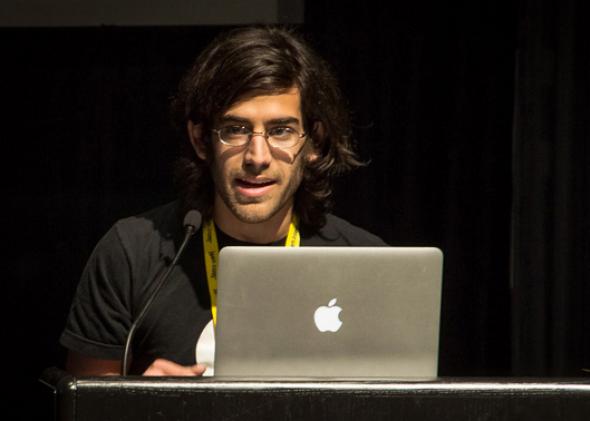Watch the Video That Precipitated Aaron Swartz’s Downfall

Courtesy of Peretz Partensky/Flickr/Wikimedia Commons
Eleven months after Aaron Swartz’s suicide, a video has been discovered that records one of the moments that led to his downfall. Kevin Poulsen at Wired’s Threat Level blog has obtained security camera footage from 2011 that shows Swartz entering a wiring closet in the basement of MIT’s Building 16. Police used this footage to help identify Swartz as the mysterious person who had been auto-downloading millions of academic journal articles from the JSTOR database. This set in motion the events that ultimately led to Swartz’s arrest, indictment, and, many believe, his death. While the video isn’t the most dramatic material, it still adds context and details to the story of Swartz’s downfall. It’s worth watching if, like so many people worldwide, you remain interested in Swartz’s life—and how and why it came to such an abrupt, unnecessary end.
When examining Swartz’s life, people tend to see what they want to see. The U.S. Attorney’s Office in Boston saw Swartz not as an innovator or a data liberator, but as a selfish thief, someone who put his own desires ahead of laws that protect private property and, ostensibly, the public interest. To them, and to the people who initially investigated the JSTOR incident, this footage likely helped crystallize what had been an abstract offense, helping to legitimize the notion that there is very little difference between a hacker and a burglar. As Poulsen writes at Wired, “Looking at the video, it’s easy to see what MIT and the Secret Service presumably saw—a furtive hacker going someplace he shouldn’t go, doing something he shouldn’t do.” This is the thinking of the U.S. attorneys: Accessing a closet without explicit permission is the same thing as accessing a database without explicit permission. Bulk downloading is the same thing as burglary.
But that’s far from the only way to see it. Last month Swartz’s friends and collaborators convened a worldwide Aaron Swartz Hackathon, where interested parties on five continents gathered over the course of a weekend to remember Swartz, discuss his legacy, and attempt to honor that legacy by working on various projects related to open data, free culture, and other causes in which Swartz believed. In a speech at the Hackathon’s opening ceremony at the Internet Archive in San Francisco, open-government advocate Carl Malamud—who, in 2008, worked with Swartz to download a significant portion of the federal court system’s PACER database—characterized bulk downloading as an act of civil disobedience against unjust and outdated statutes that, by restricting the public’s access to data, clearly work against the public interest. Invoking Gandhi and Rosa Parks, Malamud urged Hackathon attendees that they, too, could help galvanize social change through careful, deliberate, sustained acts of defiance:
Change comes from movements, when many people begin working towards a common aim. When we question authority, we do so to put them on notice, but also to educate ourselves. If we all stand together, we can tell the authorities “you can govern us, but only so long as we remain the governed.” That is the basis of civil disobedience. That takes time and patience.
Some have suggested that prosecutors wanted to make an example of Aaron Swartz. It’s become increasingly clear in the 11 months since his death that they succeeded, just not in the way they intended.
